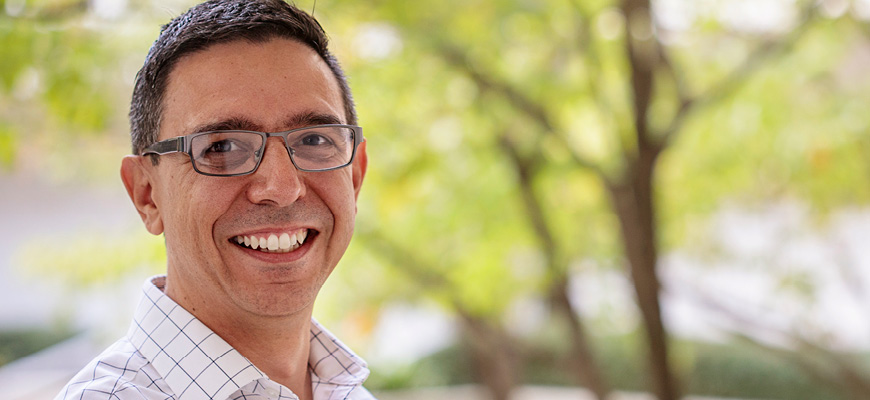
Engineering professor teaches students to think differently
Juan Caicdeo is Garnet Apple teaching award winner
Posted on: November 2, 2022; Updated on: November 2, 2022
By Craig Brandhorst, craigb1@mailbox.sc.edu
Civil and environmental engineering professor Juan Caicedo wears a lot of hats. In addition to his research and his duties as department chair for civil and environmental engineering, he has taught the department’s statistics course every semester for the past three years. The course, which includes plenty of calculus and physics, is also the first required course many majors encounter — and the first time they are asked to start thinking like engineers.
“Engineering is an interesting thing,” says Caicedo. “A lot of students in high school think that engineering is math or engineering is science — and we do use math, we do use science — but the way that we think about problems is completely different.”
As a prime example, he points to the familiar scientific process, whereby one formulates a hypothesis then conducts an experiment to test it. As Caicedo explains, the engineering design process requires a radically different approach.
“When you’re designing a building, for example, and you’re trying to find the strength of the soil, it's not like there are tags in the soil telling you, ‘Hey, these are my parameters,’” he says. “You need to start by making assumptions and making approximations. That's something that’s very new and sometimes uncomfortable for students, but it’s an integral part of engineering.”
We should provide students with the appropriate challenges for them to realize what they know and what they don't know.
Juan Caicedo
And an integral part of teaching is setting up students to succeed. In engineering, that means conditioning them to be more inquisitive, to take a more active role in their own education and thus in the engineering process itself.
“I don't think our role is to teach but to create environments for learning,” says Caicedo. “For many engineers, that's a big mental shift because we all have been trained to just sit down in our seats and listen. What I’m trying to encourage our students to do is to stand up and ask questions.”
It’s one reason he prefers to offer problems rather than demonstrate solutions.
“I’m not saying that it’s bad to provide examples,” he says. “What I'm trying to say is we should provide students with the appropriate challenges for them to realize what they know and what they don't know. If we only give them examples and we never have them do a problem on their own, they get a false sense of security and say, ‘Oh yeah, I know how to do that.’ Then they get to the test and they fail.”
He also wants to help his students understand the real-world implications of civil engineering, to see early in their academic careers that engineers can, in fact, change the world.
“It has evolved over the years, but we didn't always understand the need that students have coming into engineering — that students want to have an impact,” he says. “We need to show them that, yes, you are in the right place because you will have an impact as an engineer.”